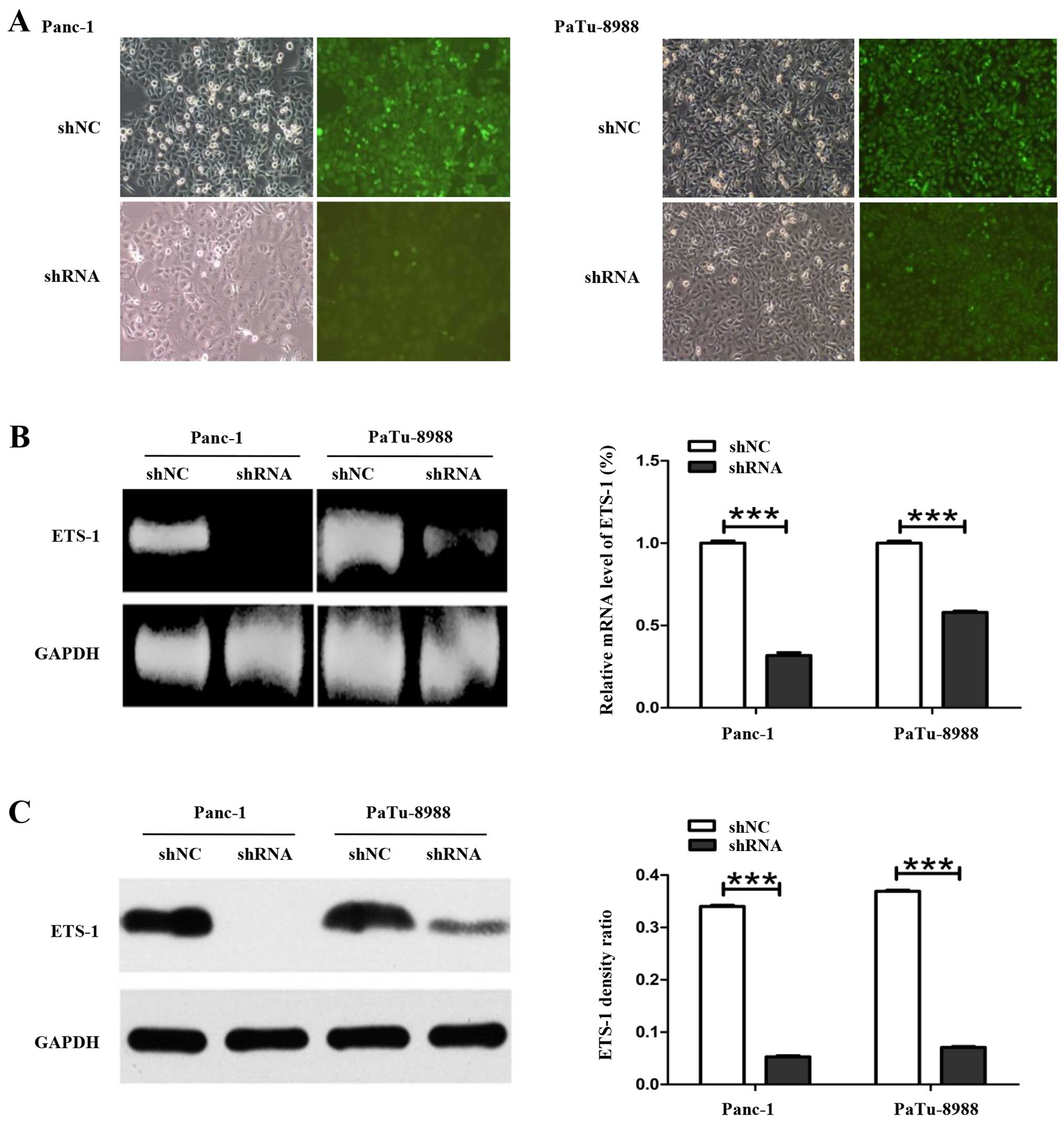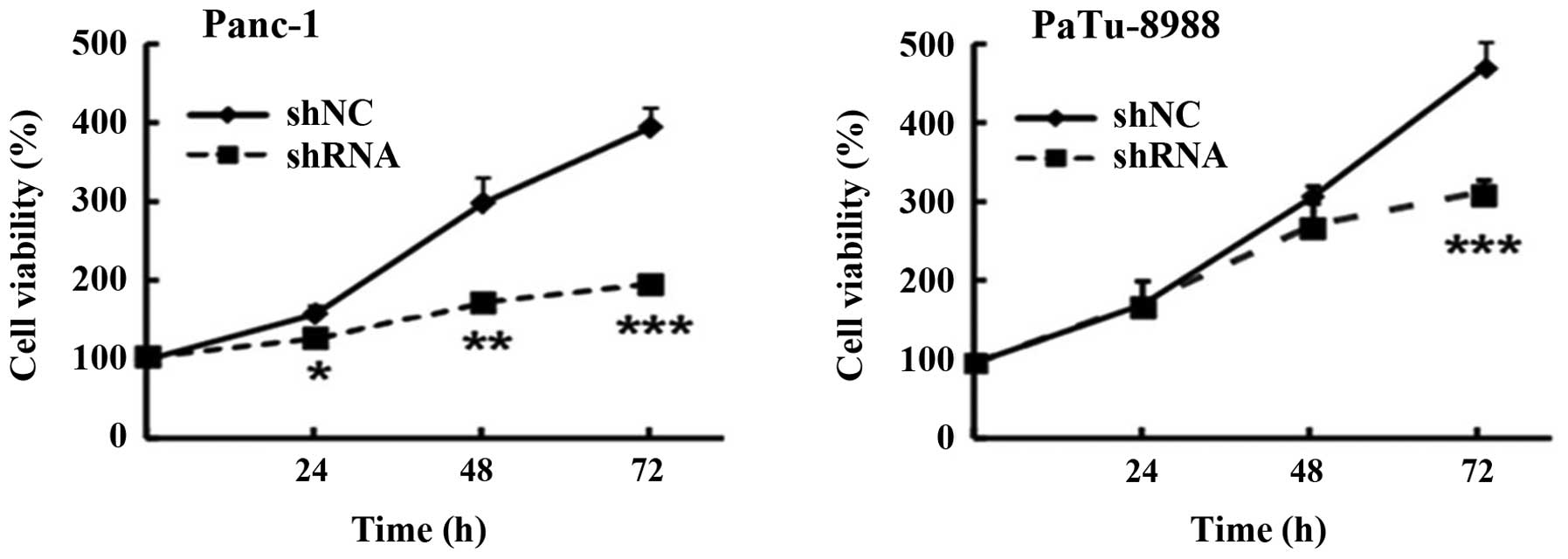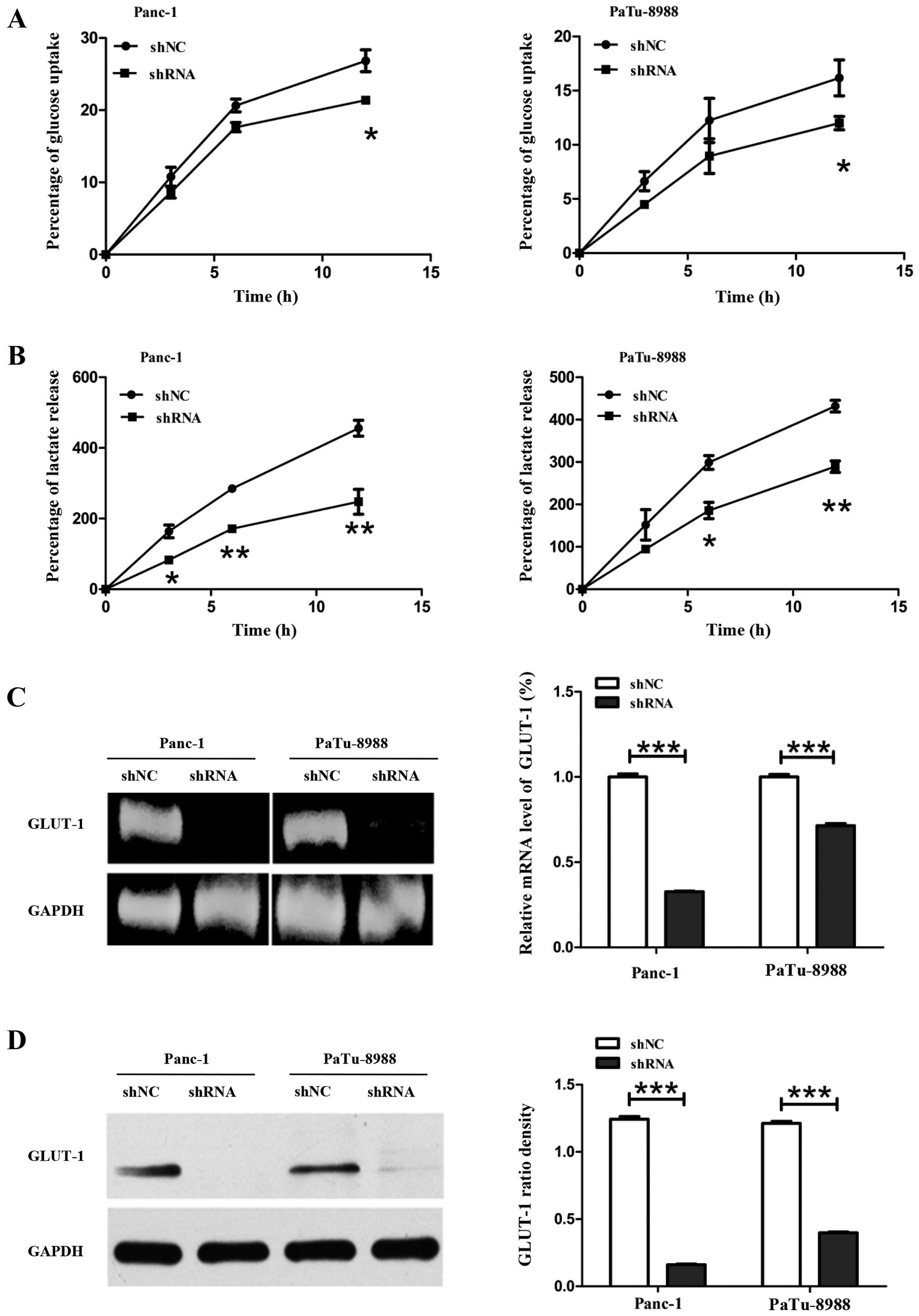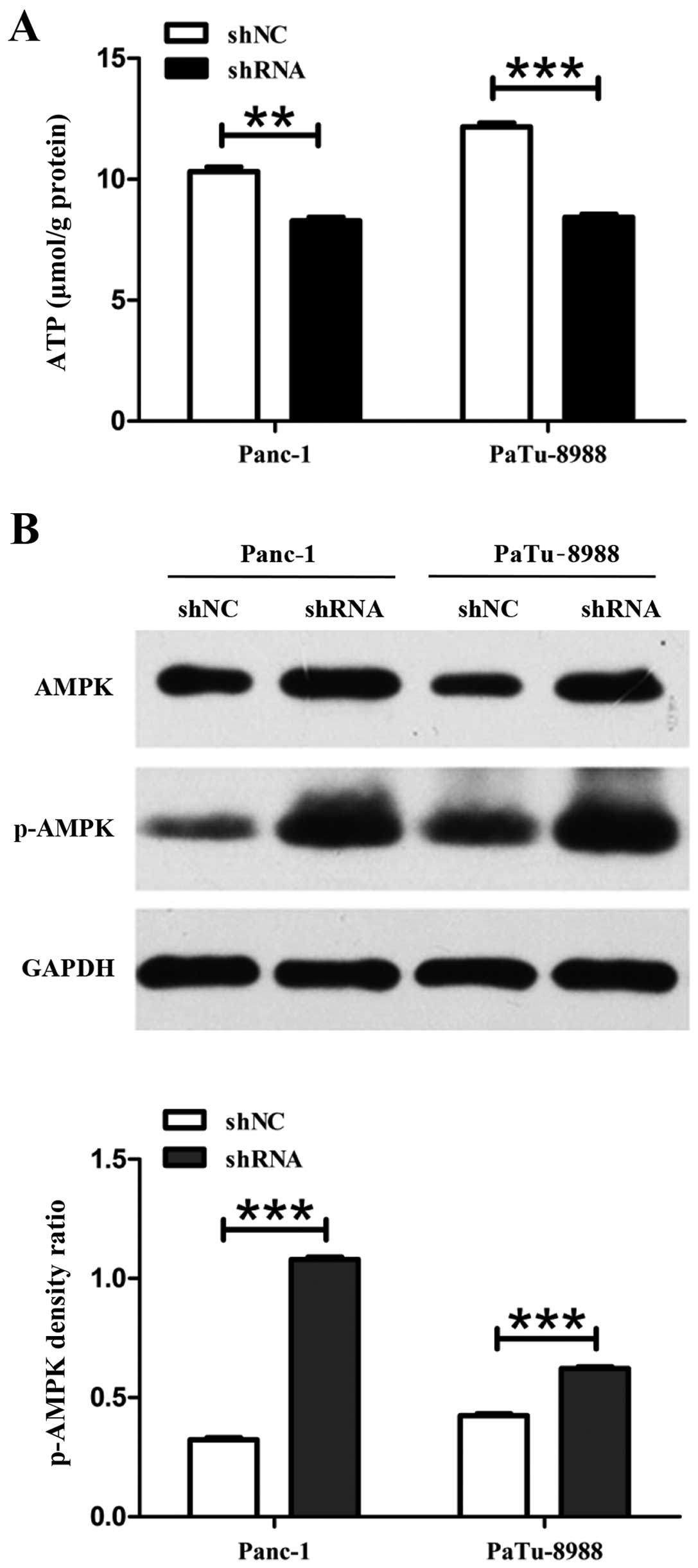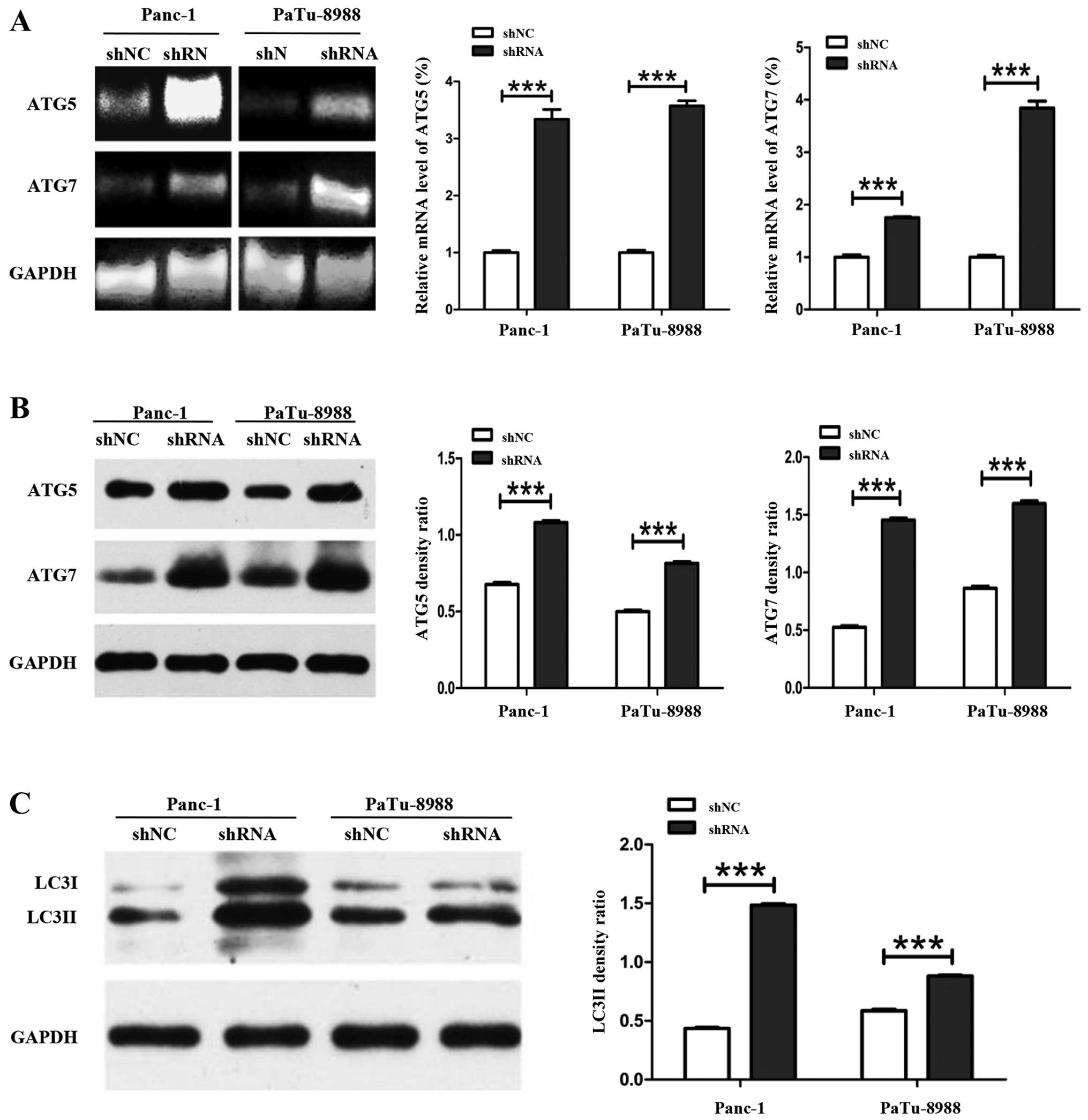|
1
|
Perera RM and Bardeesy N: Pancreatic
cancer metabolism: Breaking it down to build it back up. Cancer
Discov. 5:1247–1261. 2015. View Article : Google Scholar : PubMed/NCBI
|
|
2
|
Xie D and Xie K: Pancreatic cancer stromal
biology and therapy. Genes Dis. 2:133–143. 2015. View Article : Google Scholar : PubMed/NCBI
|
|
3
|
Cid-Arregui A and Juarez V: Perspectives
in the treatment of pancreatic adenocarcinoma. World J
Gastroenterol. 21:9297–9316. 2015. View Article : Google Scholar : PubMed/NCBI
|
|
4
|
Guillaumond F, Iovanna JL and Vasseur S:
Pancreatic tumor cell metabolism: Focus on glycolysis and its
connected metabolic pathways. Arch Biochem Biophys. 545:69–73.
2014. View Article : Google Scholar : PubMed/NCBI
|
|
5
|
Paniccia A, Merkow J, Edil BH and Zhu Y:
Immunotherapy for pancreatic ductal adenocarcinoma: An overview of
clinical trials. Chin J Cancer Res. 27:376–391. 2015.PubMed/NCBI
|
|
6
|
Tennant DA, Durán RV and Gottlieb E:
Targeting metabolic transformation for cancer therapy. Nat Rev
Cancer. 10:267–277. 2010. View
Article : Google Scholar : PubMed/NCBI
|
|
7
|
Lee M and Yoon JH: Metabolic interplay
between glycolysis and mitochondrial oxidation: The reverse Warburg
effect and its therapeutic implication. World J Biol Chem.
6:148–161. 2015. View Article : Google Scholar : PubMed/NCBI
|
|
8
|
Zhou W, Capello M, Fredolini C, Piemonti
L, Liotta LA, Novelli F and Petricoin EF: Proteomic analysis of
pancreatic ductal adenocarcinoma cells reveals metabolic
alterations. J Proteome Res. 10:1944–1952. 2011. View Article : Google Scholar : PubMed/NCBI
|
|
9
|
Lunt SY and Vander Heiden MG: Aerobic
glycolysis: Meeting the metabolic requirements of cell
proliferation. Annu Rev Cell Dev Biol. 27:441–464. 2011. View Article : Google Scholar : PubMed/NCBI
|
|
10
|
Li C, Wang Z, Chen Y, Zhou M, Zhang H,
Chen R, Shi F, Wang C and Rui Z: Transcriptional silencing of ETS-1
abrogates epithelial-mesenchymal transition resulting in reduced
motility of pancreatic cancer cells. Oncol Rep. 33:559–565.
2015.
|
|
11
|
Verschoor ML, Verschoor CP and Singh G:
Ets-1 global gene expression profile reveals associations with
metabolism and oxidative stress in ovarian and breast cancers.
Cancer Metab. 1:172013. View Article : Google Scholar : PubMed/NCBI
|
|
12
|
Zhu M, Li M, Zhang F, Feng F, Chen W, Yang
Y, Cui J, Zhang D and Linghu E: FBI-1 enhances ETS-1 signaling
activity and promotes proliferation of human colorectal carcinoma
cells. PLoS One. 9:e980412014. View Article : Google Scholar : PubMed/NCBI
|
|
13
|
Shaikhibrahim Z and Wernert N: ETS
transcription factors and prostate cancer: The role of the family
prototype ETS-1 (Review). Int J Oncol. 40:1748–1754.
2012.PubMed/NCBI
|
|
14
|
Lelièvre E, Lionneton F, Soncin F and
Vandenbunder B: The Ets family contains transcriptional activators
and repressors involved in angiogenesis. Int J Biochem Cell Biol.
33:391–407. 2001. View Article : Google Scholar : PubMed/NCBI
|
|
15
|
Oikawa T: ETS transcription factors:
Possible targets for cancer therapy. Cancer Sci. 95:626–633. 2004.
View Article : Google Scholar : PubMed/NCBI
|
|
16
|
Hahne JC, Okuducu AF, Kaminski A, Florin
A, Soncin F and Wernert N: Ets-1 expression promotes epithelial
cell transformation by inducing migration, invasion and
anchorage-independent growth. Oncogene. 24:5384–5388. 2005.
View Article : Google Scholar : PubMed/NCBI
|
|
17
|
Shaikhibrahim Z, Langer B, Lindstrot A,
Florin A, Bosserhoff A, Buettner R and Wernert N: Ets-1 is
implicated in the regulation of androgen co-regulator FHL2 and
reveals specificity for migration, but not invasion, of PC3
prostate cancer cells. Oncol Rep. 25:1125–1129. 2011.PubMed/NCBI
|
|
18
|
Gao H, Peng C, Liang B, Shahbaz M, Liu S,
Wang B, Sun Q, Niu Z, Niu W, Liu E, et al: β6 integrin induces the
expression of metalloproteinase-3 and metalloproteinase-9 in colon
cancer cells via ERK-ETS1 pathway. Cancer Lett. 354:427–437. 2014.
View Article : Google Scholar : PubMed/NCBI
|
|
19
|
Bu S, Yamanaka M, Pei H, Bielawska A,
Bielawski J, Hannun YA, Obeid L and Trojanowska M:
Dihydrosphingosine 1-phosphate stimulates MMP1 gene expression via
activation of ERK1/2-Ets1 pathway in human fibroblasts. FASEB J.
20:184–186. 2006.
|
|
20
|
Li T and Jiang S: Effect of bFGF on
invasion of ovarian cancer cells through the regulation of Ets-1
and urokinase-type plasminogen activator. Pharm Biol. 48:161–165.
2010. View Article : Google Scholar : PubMed/NCBI
|
|
21
|
Jiang Y, Xu W, Lu J, He F and Yang X:
Invasiveness of hepatocellular carcinoma cell lines: Contribution
of hepatocyte growth factor, c-met, and transcription factor Ets-1.
Biochem Biophys Res Commun. 286:1123–1130. 2001. View Article : Google Scholar : PubMed/NCBI
|
|
22
|
Tomita N, Morishita R, Taniyama Y, Koike
H, Aoki M, Shimizu H, Matsumoto K, Nakamura T, Kaneda Y and Ogihara
T: Angiogenic property of hepatocyte growth factor is dependent on
upregulation of essential transcription factor for angiogenesis,
ets-1. Circulation. 107:1411–1417. 2003. View Article : Google Scholar : PubMed/NCBI
|
|
23
|
Kato T, Fujita Y, Nakane K, Kojima T,
Nozawa Y, Deguchi T and Ito M: ETS1 promotes chemoresistance and
invasion of paclitaxel-resistant, hormone-refractory PC3 prostate
cancer cells by upregulating MDR1 and MMP9 expression. Biochem
Biophys Res Commun. 417:966–971. 2012. View Article : Google Scholar
|
|
24
|
Verschoor ML, Wilson LA, Verschoor CP and
Singh G: Ets-1 regulates energy metabolism in cancer cells. PLoS
One. 5:e135652010. View Article : Google Scholar : PubMed/NCBI
|
|
25
|
Sato T and Miwa A: Ets-1 and integrin
beta3 for lung metastasis from colorectal cancer. APMIS.
110:347–353. 2002. View Article : Google Scholar : PubMed/NCBI
|
|
26
|
Sasaki H, Yukiue H, Moiriyama S, Kobayashi
Y, Nakashima Y, Kaji M, Kiriyama M, Fukai I, Yamakawa Y and Fujii
Y: Clinical significance of matrix metalloproteinase-7 and Ets-1
gene expression in patients with lung cancer. J Surg Res.
101:242–247. 2001. View Article : Google Scholar : PubMed/NCBI
|
|
27
|
Verschoor ML and Singh G: Ets-1 regulates
intracellular glutathione levels: Key target for resistant ovarian
cancer. Mol Cancer. 12:1382013. View Article : Google Scholar : PubMed/NCBI
|
|
28
|
Li W, Zang W, Liu P, Wang Y, Du Y, Chen X,
Deng M, Sun W, Wang L, Zhao G, et al: MicroRNA-124 inhibits
cellular proliferation and invasion by targeting Ets-1 in breast
cancer. Tumour Biol. 35:10897–10904. 2014. View Article : Google Scholar : PubMed/NCBI
|
|
29
|
Tang N, Wang X, Huang T, Wu Y and Chen Y:
Role of Ets-1 in fibronectin-derived heparin-binding domain
polypeptides alleviating melanoma cell invasiveness and
chemoresistance. Exp Dermatol. 23:512–513. 2014. View Article : Google Scholar : PubMed/NCBI
|
|
30
|
Span PN, Manders P, Heuvel JJ, Thomas CM,
Bosch RR, Beex LV and Sweep CG: Expression of the transcription
factor Ets-1 is an independent prognostic marker for relapse-free
survival in breast cancer. Oncogene. 21:8506–8509. 2002. View Article : Google Scholar : PubMed/NCBI
|
|
31
|
Puzovic V, Brcic I, Ranogajec I and
Jakic-Razumovic J: Prognostic values of ETS-1, MMP-2 and MMP-9
expression and co-expression in breast cancer patients. Neoplasma.
61:439–446. 2014. View Article : Google Scholar : PubMed/NCBI
|
|
32
|
Davidson B, Reich R, Goldberg I, Gotlieb
WH, Kopolovic J, Berner A, Ben-Baruch G, Bryne M and Nesland JM:
Ets-1 messenger RNA expression is a novel marker of poor survival
in ovarian carcinoma. Clin Cancer Res. 7:551–557. 2001.PubMed/NCBI
|
|
33
|
Davidson B, Risberg B, Goldberg I, Nesland
JM, Berner A, Tropé CG, Kristensen GB, Bryne M and Reich R: Ets-1
mRNA expression in effusions of serous ovarian carcinoma patients
is a marker of poor outcome. Am J Surg Pathol. 25:1493–1500. 2001.
View Article : Google Scholar : PubMed/NCBI
|
|
34
|
Takai N, Miyazaki T, Nishida M, Nasu K and
Miyakawa I: c-Ets1 is a promising marker in epithelial ovarian
cancer. Int J Mol Med. 9:287–292. 2002.PubMed/NCBI
|
|
35
|
Fujimoto J, Aoki I, Toyoki H, Khatun S and
Tamaya T: Clinical implications of expression of ETS-1 related to
angiogenesis in uterine cervical cancers. Ann Oncol. 13:1598–1604.
2002. View Article : Google Scholar : PubMed/NCBI
|
|
36
|
Kimmelman AC: Metabolic dependencies in
RAS-driven cancers. Clin Cancer Res. 21:1828–1834. 2015. View Article : Google Scholar : PubMed/NCBI
|
|
37
|
Cairns RA: Drivers of the Warburg
phenotype. Cancer J. 21:56–61. 2015. View Article : Google Scholar : PubMed/NCBI
|
|
38
|
Mogi A, Koga K, Aoki M, Hamasaki M, Uesugi
N, Iwasaki A, Shirakusa T, Tamura K and Nabeshima K: Expression and
role of GLUT-1, MCT-1, and MCT-4 in malignant pleural mesothelioma.
Virchows Arch. 462:83–93. 2013. View Article : Google Scholar
|
|
39
|
Blum R and Kloog Y: Metabolism addiction
in pancreatic cancer. Cell Death Dis. 5:e10652014. View Article : Google Scholar : PubMed/NCBI
|
|
40
|
Granja S, Pinheiro C, Reis RM, Martinho O
and Baltazar F: Glucose addiction in cancer therapy: Advances and
drawbacks. Curr Drug Metab. 16:221–242. 2015. View Article : Google Scholar : PubMed/NCBI
|
|
41
|
Li N, Huang D, Lu N and Luo L: Role of the
LKB1/AMPK pathway in tumor invasion and metastasis of cancer cells
(Review). Oncol Rep. 34:2821–2826. 2015.PubMed/NCBI
|
|
42
|
Kim N, Jeong S, Jing K, Shin S, Kim S, Heo
JY, Kweon GR, Park SK, Wu T, Park JI, et al: Docosahexaenoic acid
induces cell death in human non-small cell lung cancer cells by
repressing mTOR via AMPK activation and PI3K/Akt inhibition. BioMed
Res Int. 2015:2397642015. View Article : Google Scholar : PubMed/NCBI
|
|
43
|
Saito Y, Chapple RH, Lin A, Kitano A and
Nakada D: AMPK protects leukemia-initiating cells in myeloid
leukemias from metabolic stress in the bone marrow. Cell Stem Cell.
17:585–596. 2015. View Article : Google Scholar : PubMed/NCBI
|
|
44
|
Mihaylova MM and Shaw RJ: The AMPK
signalling pathway coordinates cell growth, autophagy and
metabolism. Nat Cell Biol. 13:1016–1023. 2011. View Article : Google Scholar : PubMed/NCBI
|
|
45
|
Kim J, Kundu M, Viollet B and Guan KL:
AMPK and mTOR regulate autophagy through direct phosphorylation of
Ulk1. Nat Cell Biol. 13:132–141. 2011. View Article : Google Scholar : PubMed/NCBI
|
|
46
|
Abdou AG, Eldien MM and Elsakka D: GLUT-1
Expression in cutaneous basal and squamous cell carcinomas. Int J
Surg Pathol. 23:447–453. 2015. View Article : Google Scholar : PubMed/NCBI
|
|
47
|
Vuppalapati KK, Bouderlique T, Newton PT,
Kaminskyy VO, Wehtje H, Ohlsson C, Zhivotovsky B and Chagin AS:
Targeted deletion of autophagy genes Atg5 or Atg7 in the
chondrocytes promotes caspase-dependent cell death and leads to
mild growth retardation. J Bone Miner Res. 30:2249–2261. 2015.
View Article : Google Scholar : PubMed/NCBI
|
|
48
|
Lao Y and Xu N: Autophagy in cancer
chemoprevention: Identification of novel autophagy modulators with
anticancer potential. Methods Mol Biol. 1379:151–163. 2016.
View Article : Google Scholar
|
|
49
|
Shimizu S, Arakawa S and Nishida Y:
Autophagy takes an alternative pathway. Autophagy. 6:290–291. 2010.
View Article : Google Scholar : PubMed/NCBI
|
|
50
|
Cairns RA, Harris IS and Mak TW:
Regulation of cancer cell metabolism. Nat Rev Cancer. 11:85–95.
2011. View Article : Google Scholar : PubMed/NCBI
|
|
51
|
Zhang TB, Zhao Y, Tong ZX and Guan YF:
Inhibition of glucose-transporter 1 (GLUT-1) expression reversed
Warburg effect in gastric cancer cell MKN45. Int J Clin Exp Med.
8:2423–2428. 2015.PubMed/NCBI
|
|
52
|
Yoon SO, Jeon TJ, Park JS, Ryu YH, Lee JH,
Yoo JS, Kim JK, Yoon DS and Oh EJ: Analysis of the roles of glucose
transporter 1 and hexokinase 2 in the metabolism of glucose by
extrahepatic bile duct cancer cells. Clin Nucl Med. 40:e178–e182.
2015. View Article : Google Scholar : PubMed/NCBI
|
|
53
|
Kim SE, Park HJ, Jeong HK, Kim MJ, Kim M,
Bae ON and Baek SH: Autophagy sustains the survival of human
pancreatic cancer PANC-1 cells under extreme nutrient deprivation
conditions. Biochem Biophys Res Commun. 463:205–210. 2015.
View Article : Google Scholar : PubMed/NCBI
|
|
54
|
Liu B, Cheng Y, Liu Q, Bao JK and Yang JM:
Autophagic pathways as new targets for cancer drug development.
Acta Pharmacol Sin. 31:1154–1164. 2010. View Article : Google Scholar : PubMed/NCBI
|















